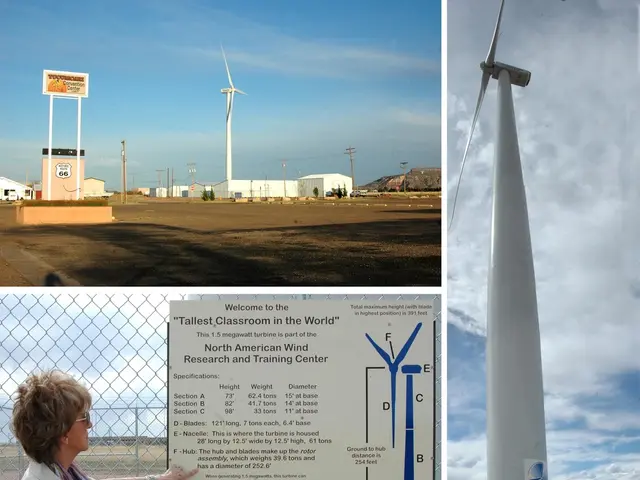Dr. Artem Musiienko's New Station to Accelerate Perovskite Solar Cell Efficiency
Dr. Artem Musiienko, a distinguished scholar in solar energy research, is set to establish a new measurement station at the Helmholtz-Zentrum Berlin (HZB) for high-throughput optoelectronic measurements, supported by advanced robots and automated data analysis. This initiative, part of the COMET-PV project funded by the BMBF NanoMatFutur program, aims to significantly accelerate the development of perovskite solar cells.
Dr. Musiienko's ultimate goal is to enhance the efficiency of perovskite solar cells to over 35%, a leap that could revolutionize the solar energy industry. Perovskite, a large class of semiconducting materials, offers high performance and cost-effectiveness, particularly when used in tandem with silicon or other semiconductor materials. To achieve this, Dr. Musiienko will focus on tin-based perovskites, exploring diverse variations in their material composition using robots and AI.
The COMET-PV project, which Dr. Musiienko continues to lead, involves collaborations with renowned international research institutions and industry partners from chemistry, robots, instrumentation, and solar cell production. This interdisciplinary approach aims to accelerate material research by a factor of 100. In addition to his research, Dr. Musiienko will establish a young investigator group at HZB and take on teaching responsibilities at the Faculty of Physics, Humboldt University of Berlin.
Dr. Artem Musiienko's new measurement station at HZB, supported by robots and automated data analysis, marks a significant step towards accelerating the development of perovskite solar cells. His ambitious goal of achieving over 35% efficiency in these cells, coupled with his commitment to teaching and mentoring the next generation of researchers, positions him as a key figure in the future of solar energy research.
Read also:
- Boston Metal pioneers route to commercial production for eco-friendly steel method
- United States Secures $632 Million to Fuel Electric Vehicle Revolution
- Clean energy companies HyFlux and AMRC secure financing from ATI for game-changing advancements in aeroplane cooling systems linked to clean aviation.
- DKSH Upgrades Distribution Operations Through Significant Technological Renovation








